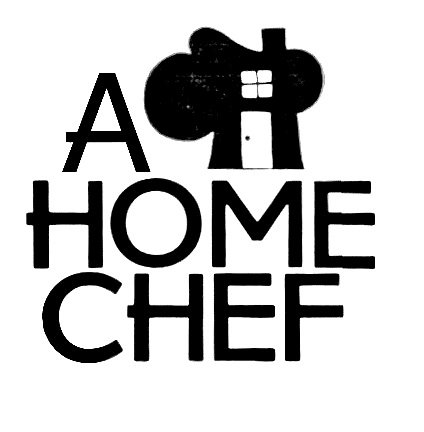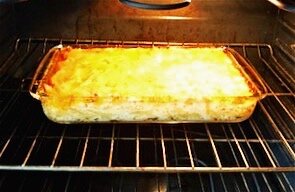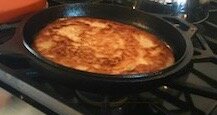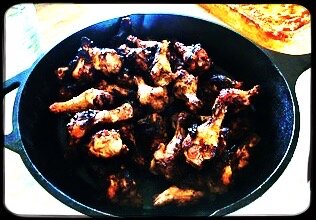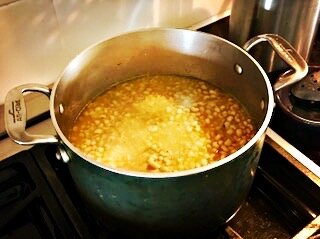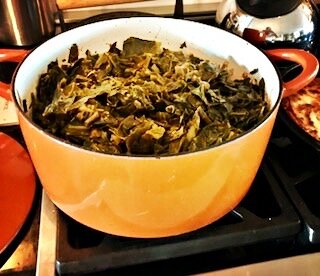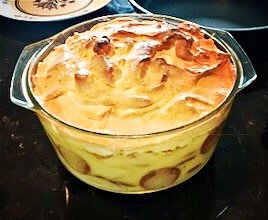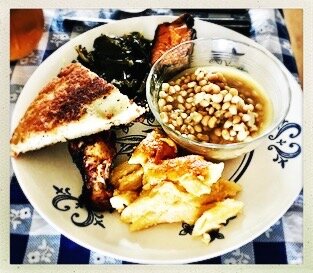FROM THE HILLS OF APPALACHIA TO THE FARMS OF EASTERN NORTH CAROLINA
My mother and the farmhouse where I was raised as a child
Sharing of food is central to our cultures, whether it is in a tribal setting around a campfire or in an elegant dining room served by waiters on linen tablecloths. In times of isolation, the fact becomes more evident that we yearn to be nurtured by one another and the comfort of enjoying meals together. Through my travels, I have discovered commonalities in the love of the foods that sustain our very soul.
One such place is Italy where my friend John Martin Taylor, an American food writer and culinary historian, lived for a while. He recently wrote in a blog--”When I lived in northern Italy, I was struck by the similarities among many of their traditional foods of the American South. Polenta was no more than cornmeal mush…And, up In the hills behind Genoa (with its wood-burning stoves, well-seasoned cast iron skillets, and the use of wild greens) the cooking and the culture was like that of the southern reaches of Appalachia.”
Appalachian Cookery has recently taken center stage as a major cuisine. In a New York Times) article “Appalachian Food Finds a Spotlight” chronicles the books, restaurants, and chefs that celebrate this “farm to table” food culture. Some of the characteristics include:
1. You eat what you raise or grow, basically (with a few staples “store-bought”)
2. Meals are simple, prepared with the labors of grandmothers, mothers who passed down family favorites
3. The lifestyles are a subsistence culture; sustaining the labors of of the household and farmhands
All three relate to my background. I was born on a Wallace Family farm, with no running water, in Eastern North Carolina.. The vegetables were harvested straight out of my Granny’s garden and the meat came from livestock. I can remember to this day, my white-haired, stalwart grandmother chasing down a chicken and wringing its neck, only to have it run away until it flopped out of life.
The labor of the “women-folk” turned out three square meals a day from a back room shaped like a galley. A huge farm sink with a water pump faced the rear of the house, and there was a slop bucket nearby to “recycle” scraps for the pigs. The cast iron wood burning stove, with upper shelves to warm pies or an iron, was just to your back. Some of the best “vittles” I have ever tasted emerged from that rustic kitchen. Rural life buzzed in and out like a “Grand Central Station”!
I would awaken to the smokey smell of either bacon, sausage, or a slice of ham with red eye gravy. The aromas beckoned me to join the activity in the kitchen. On the table served family style were grits, eggs, and ALWAYS hot buttered biscuits with molasses for soppin’! Condiments of fresh fruits or otherwise home-canned, along with jams and jellies adorned the table. A hearty family breakfast was necessary to sustain the men before they set out to the fields.
Around noon, the dinner bell would ring signaling the family and farm hands to come “warsh” up. Dinner (what we now call lunch) consisted of a meat-- (pork, chicken, an occasional squirrel, dove, or rabbit)— a green (collards, mustard, or kale)—peas or beans—all cooked with a ham hock to flavor the broth. Also, beets, okra, tomatoes, cucumbers, potatoes, corn (whatever was in season) were passed family-style. There was skillet cornbread and always a pie or cake for dessert.
Naps were taken before afternoon work began. One of my fondest memories was waking up and going out to the squeaky swing on the front porch where Granny would feed me with her fingers, mashed up cold cornbread with leftover bits of stringy, salty ham hock—that, to me, was a delicacy and a treasured fond memory!
Leftovers for supper was simple fare. A late-night snack was a leftover sweet or a piece of fruit, while the household gathered around the radio to listen to news or a Lone Ranger episode.
The staples came from my uncle’s country store “Wallace’s”. It was a community gathering place. Walking through the screen door, a jar of pickled pig’s feet or eggs on the left greeted you. Just ahead was a tin tub filled with ice and sodas—Nehi, Sun Drop, Dr. Pepper, etc. My reward during the trip was a Moonpie and a pack of peanuts to pour into a bottle of Dr. Pepper. It was a happening place and a fun excursion!
Fast forward 60+ years, my book club read Hillbilly Elegy: A Memoir of a Family and Culture in Crisis by J. D. Vance and I hosted the luncheon. Researching the values of Vance’s Appalachia upbringing, I deemed the foods from those humble roots were all too similar to mine.
I grabbed my old copy of “White Trash Cooking” by Ernest Mathew Mickler. Mikler defines White Trash as “this be the victuals of white Southern rural peasants, except we call them “folks”, not peasants”. I proceed to plan and provision for a “meat and 4” luncheon.
White Trash Cooking, picture of Granny, white lightening, condiments
1. First stop—Boone Farm’s Market where they still carry soda in glass bottles and young, just picked collard greens.
Sodas in glass bottles
2. Make sure the larder is stocked with Cameilia Brand (Since 1923) Lady Cream Peas, Atkinson’s (Since 1757) white water ground cornmeal (my family used nothing but) for the skillet cornbread, homemade pepper relish for the collards, and sweet potatoes to be simply baked.
3. The meat: my neighborhood Butcher Shop carries farm raised chickens and I procured chicken wings to barbecue over wood charcoal.
4. Create a mac and cheese recipe by combining the styles of Ben and Karen Barker’s not afraid of flavor, Edna Lewis and Scott Peacock’s The Gift of Southern Cooking , and Ashley Christensen’s Poole.
5. And of course the dessert was a quintessential banana pudding inspired by John T. Edges A Gracious Plenty.
Sweet tea in mason jars was a compulsory drink, in addition to the sodas.
mac and cheese, skillet cornbread, barbecued chicken wings. lady peas, collard greens, banana pudding
Meals that are shared, like this luncheon, prepared from the soul of one’s kitchen is a true southern tradition.The experience of traveling the world has taught me the best recipes and cuisine are inspired by the cooking of Grandmothers everywhere. Memaw was central to J. D. Vance growing up as my Granny was to me. And those thrifty women had experienced an “economic downturn” or two in their years. Waste was not in their vocabulary. Now, I treasure even more the roots of my heritage.There is one thing for sure though, there was no such thing as culinary “Po” in this “White Trash” cooking—
Lunch is served
James B. Hunt, Jr., former Governor of North Carolina and a family friend is quoted in White Trash Cooking…”Looking through it, it’s clear to me what I am”.
Mother’s Day lunch with baby brother and cousins served on assorted linens that cover tobacco trucks…in front of the chicken coop…
HAPPY MOTHER’S DAY
